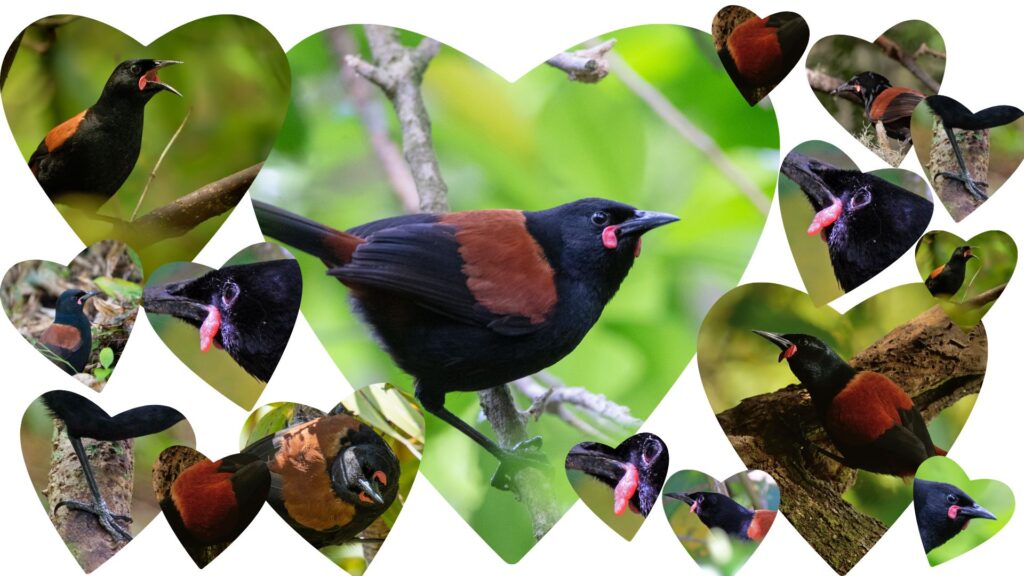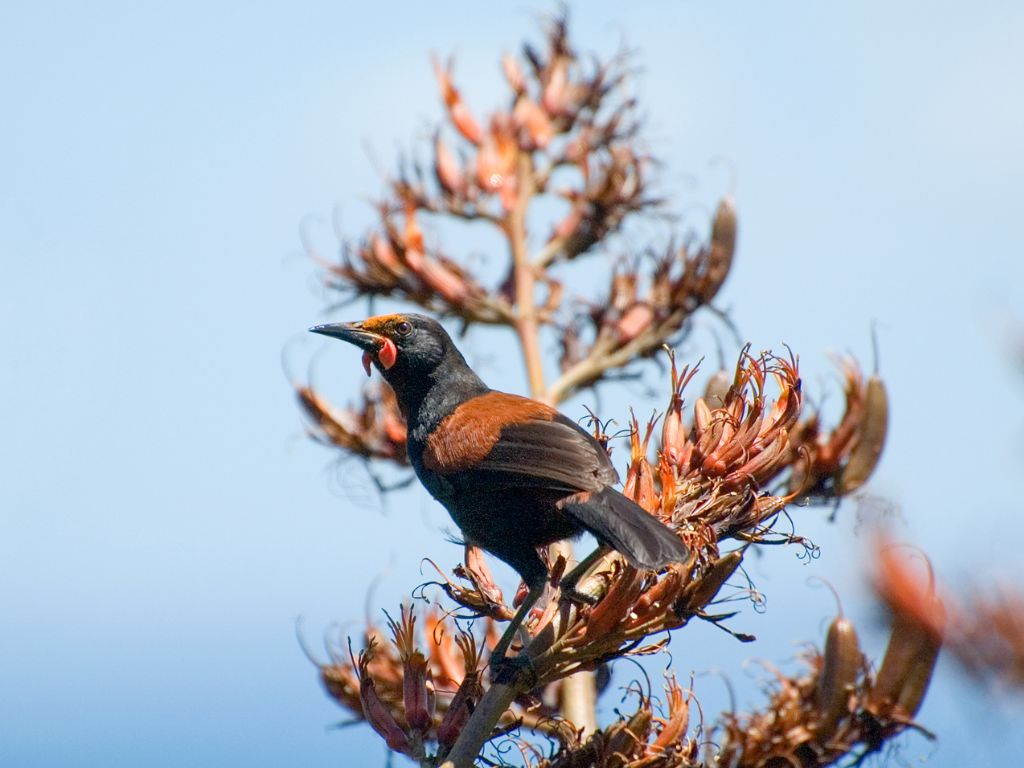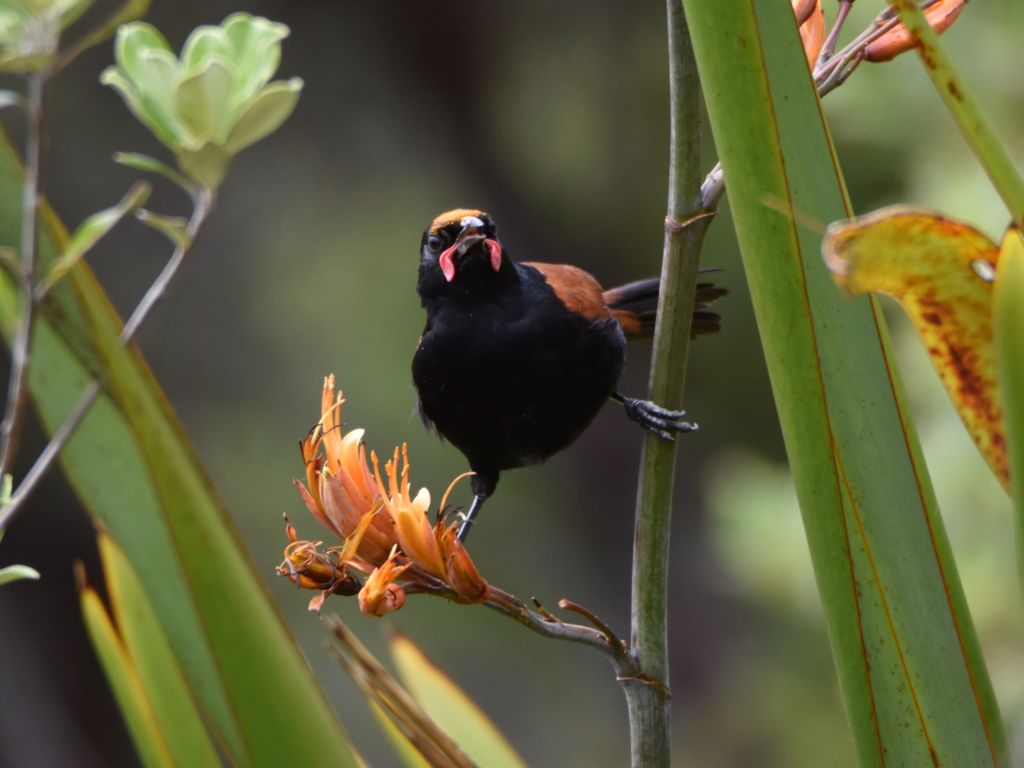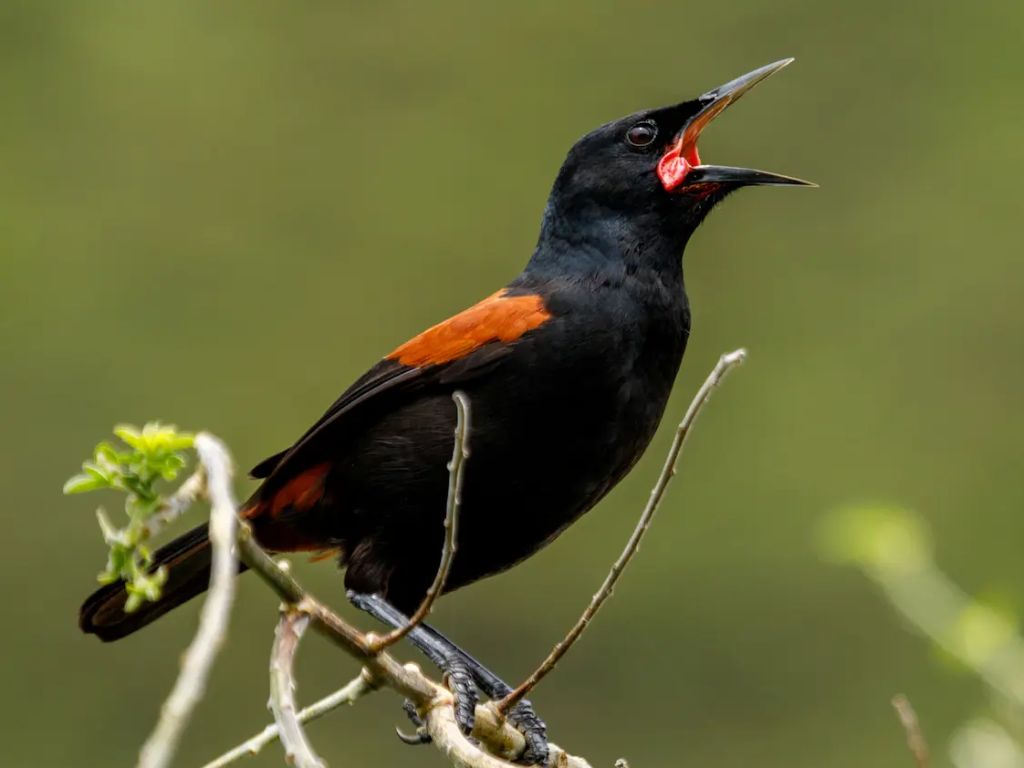If you’re looking for a new feathery friend to obsess over, then look no further than the tīeke (saddleback). There’s more to them than striking black feathers, a chestnut saddle and ruby-red wattles. Here are five reasons this bird deserves a spot in your heart, in no particular order.

1. They are the ultimate underdogs and comeback kids
Tīeke are incredibly vulnerable to mammalian predators. By the early 1960s, South Island tīeke only existed on offshore islands after being forced them off the mainland. When a boat accidentally brought ship rats to Big South Cape Island (off Stewart Island) and threatened their existence, humans scrambled to rescue them.
The NZ Wildlife Service moved 36 birds to nearby rat-free islands. The current population of 2,000 South Island tīeke are all descended from those 36 survivors. It is thought to be the first example worldwide of a bird species being saved from extinction by human intervention.
North Island tīeke are faring better, living on islands but also in mainland fenced sanctuaries.

2. They have sturdy legs

Tīeke use their stout legs to bound through vegetation and their long, sharp bills to pick through and toss aside leaf litter, pry apart and probe trees and rotting wood, and strip bark off trees looking for bugs or nectar to eat.
Like parrots, they sometimes hold food with one foot and tear it apart with their bill.
They are not the strongest fliers, but they know how to use their sturdy legs to get the job done.
3. They have accents
Tīeke form distinct songs and calls unique to their area, not dissimilar to human dialects.
A study has shown that native North Island tīeke, isolated from each other on offshore islands for 50 years, developed new songs and seem to have trouble understanding each other. The study reveals the unintended impact of human intervention, albeit well-intentioned, on fundamental evolutionary processes.
“In this case, efforts to save the saddleback from extinction have led to dramatic changes in vocal diversity across islands probably due to cultural bottlenecks and cultural mutations,” says the study’s author, Dr. Kevin Parker.

4. They are the bad boys in Māori tradition

According to Māori tradition, the chestnut saddle was caused by the demigod Maui.
When Maui was lassoing the sun to slow it down, he asked tīeke to bring him some water to cool down.
When the tīeke didn’t, Maui grabbed it with his fiery hot hand and burnt its feathers.
From that day on, the bird wore a reddish-brown saddle.
5. They are energetic
When alarmed, tīeke will give off sharp, rapid cries that sound like their Māori name, tīeke.
They’re not just vocal but also energetic bathers, splashing water in all directions (check out the video adjacent).
This is reflected in the Māori saying that is used when something is being done to excess: me he wai tā tīeke, ‘like the water spread around by a saddleback’.

